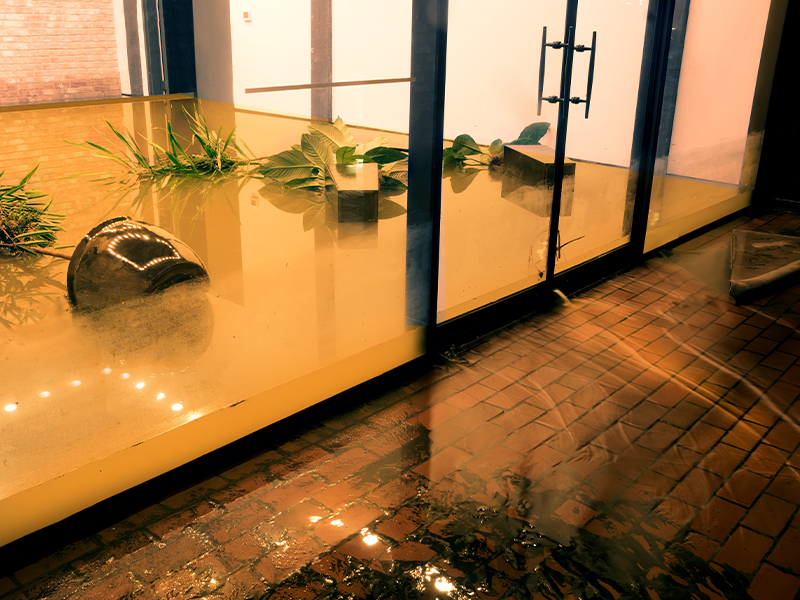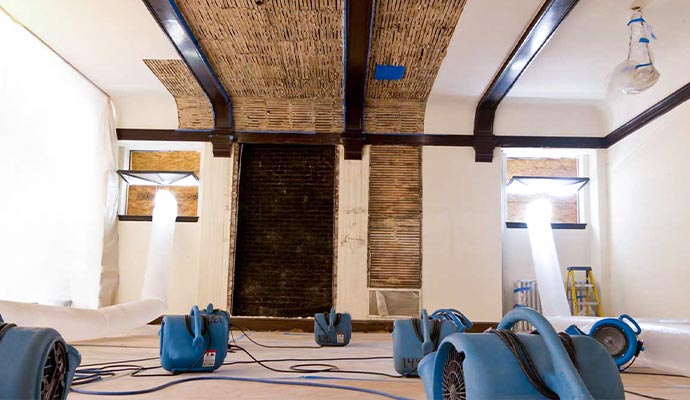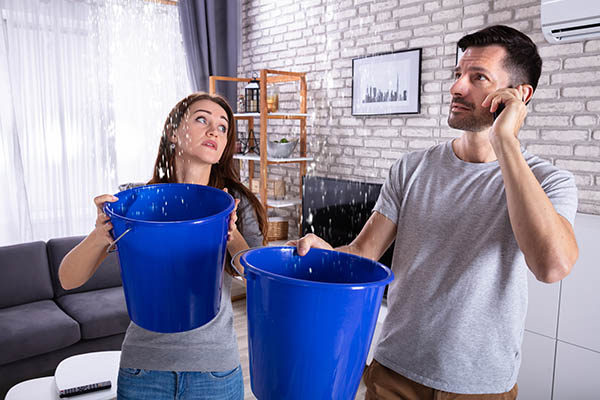Strategic Mold Inspection Philadelphia: Identifying and Attending To Mold Worries
Emergency Situation Water Damage Restoration: Swift Response to Lessen Additional Damage
Water damages can strike all of a sudden and leave damaging impacts on homes and services. When confronted with such a circumstance, a speedy action is critical to decrease further damages and protect against potential health and wellness risks. However just what does emergency situation water damages reconstruction require? In this discussion, we will dig into the value of immediate activity, the analysis process, the actions associated with water extraction and drying out, mold prevention and removal, and eventually, the restoration of the affected location. By comprehending the necessity and thorough nature of this process, you will obtain useful understandings into exactly how professionals deal with emergency water damage, guaranteeing a swift and efficient reaction.
Relevance of Swift Response
Swift reaction is of utmost relevance in water damages repair to reduce further damages and alleviate potential risks. When water damages takes place, whether as a result of a burst pipeline, an all-natural calamity, or any other unforeseen event, time is essential. The longer water beings in a structure, the even more damages it can create. This is why it is essential to act swiftly and efficiently to remove the water and begin the restoration process.
One of the main factors swift feedback is necessary in water damages restoration is to prevent the development of mold and mold. Mold not only creates more damages to the structure of the building however likewise postures wellness risks to residents.
Water damages can be ravaging, particularly when it affects personal things of monetary or nostalgic worth. Acting swiftly permits specialists to examine the damage and carry out suitable remediation techniques to recover as much as possible.
Examining the Extent of Damages

During the evaluation, remediation professionals thoroughly examine the affected location to recognize noticeable indications of damage, such as water stains, deformed products, and mold and mildew growth. They likewise use customized tools to find concealed damage, such as moisture meters and thermal imaging cameras. This thorough examination enables them to accurately establish the degree of the damage and create a customized remediation plan.
Because it aids experts prioritize their efforts,Examining the degree of water damage is essential. They can determine areas that call for instant focus, such as standing water removal and drying out, to avoid additional damages and reduce the threat of mold development. They can likewise determine the locations that need fixings or replacement, making certain that no damage goes without treatment or unnoticed.

Water Extraction and Drying Process
The water extraction and drying procedure is a vital action in water damage restoration, as it involves the removal of excess water and the extensive drying of the damaged location to stop further damages and reduce the risk of mold and mildew growth. After examining the extent of the water damages, Related Site the next action is to extract the water from the damaged area. This is commonly done utilizing customized devices such as vacuum cleaners, pumps, and dehumidifiers. These tools are made to efficiently and effectively get rid of water from different surfaces, consisting of rugs, floors, and wall surfaces.
This action is crucial in preventing additional damages, such as architectural damages and the development of mold and mildew and mildew. The drying process may take several days, depending on the extent of the water damages and the products entailed.
It is very important to make certain that the damaged location is entirely dry prior to waging any type of repair work or reconstruction. Failure to thoroughly dry out the location can cause lasting issues, including damaged structures, moldy odors, and the development of mold and mildew and mildew. As a result, expert water damage restoration firms utilize moisture discovery tools to make sure that the affected location is totally dry before continuing to the following step.
Mold Prevention and Removal
Efficient mold and mildew avoidance and remediation are critical in water damage restoration to make sure the safety and honesty of the affected location. home go now inspector philadelphia. When water damage takes place, whether from a burst pipeline, flooding, or a leaky roof covering, it creates an excellent atmosphere for mold and mildew growth. Mold and mildew can begin to develop within 24 to 2 days after water damage, and if left without treatment, it can spread quickly and create major wellness risks
To avoid mold and mildew growth, it is necessary to address water damage without delay. The primary step is to recognize and fix the source of the water intrusion. When the resource is fixed, the afflicted location should be completely dried out to avoid wetness from sticking around. This may include the usage of dehumidifiers, air moving companies, and other specific tools to remove excess moisture from the air and surface areas.
In situations where mold and mildew development has actually currently taken place, remediation is required to get rid of the mold and stop its return. This entails the mindful removal and disposal of afflicted materials, such as drywall or rug, to make certain that all traces of mold and mildew are eradicated. It is essential to keep in mind that mold and mildew removal need to be executed by specialists that have the essential training and tools to safely deal with and eliminate mold and mildew.
Recovering the Affected Location

To start with, it is essential to completely dry out the area to avoid any additional damages and to hinder the development of mold and mildew and mold. This may include making use of specialized drying out equipment, such as dehumidifiers and industrial-grade fans, to eliminate all wetness from the afflicted surfaces.
As soon as the area is totally dry, the remediation process can begin. This might include repairing or replacing harmed structural elements, such as ceiling, flooring, or drywall tiles. It is essential to address any underlying concerns that might have triggered the water damage, such as leaky pipelines or damaged pipes, to avoid future events.
Additionally, recovering the damaged area may additionally include repainting walls, changing damaged components, and extensively cleaning and sanitizing the room. This makes certain that not only is the area structurally audio, however it is also cosmetically pleasing and risk-free for occupancy.
Verdict
Examining the degree of damages allows for reliable water extraction and drying processes to be carried out. In general, prompt action and complete remediation actions are essential to alleviating the negative influences of water damage.
Swift feedback site web is of utmost significance in water damages remediation to decrease additional damages and minimize potential dangers.During the evaluation, reconstruction experts extensively analyze the afflicted location to recognize visible indications of damages, such as water stains, deformed materials, and mold development.The water extraction and drying out process is a critical step in water damage reconstruction, as it entails the elimination of excess water and the comprehensive drying of the afflicted location to stop further damage and alleviate the danger of mold and mildew development. After assessing the extent of the water damage, the next step is to extract the water from the affected area.Efficient mold prevention and remediation are important in water damages reconstruction to ensure the safety and integrity of the affected area.